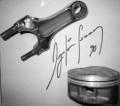

Originally Posted by
duncan

if I caught traction the car had a really heavy, dead throttle response
sounds like TCS kicking in... it should be accompanied by a flashing TCS lamp on the dash, (in the rev counter i think)...
giving it more beans won't make any difference it'll still try to kill the engine power, it only 'ticks off' if you momentarily lift off the throttle and reapply....
(found this out when an abs sensor failed, i was turning tight out of a garage forecourt , the TCS was convinced the rear wheels were spinning and killed the power... as i was trying to pull away up a hill!... pretty awkward to lift off completely and re apply with someone close behind that accelerated better than me!)
aka Jonathan!!
'92 charlotte green auto.... as a daily
'37 Ford Y street rod......... something for the weekend!
...... if a photobucket pic is foggy, click it, and it'll take you to the clear version, yes, it's a clicking faff....





 Reply With Quote
Reply With Quote





